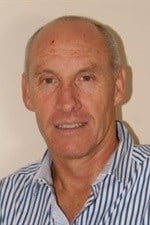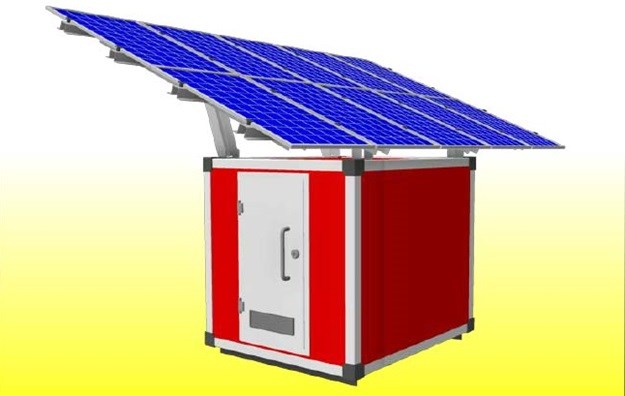The Greenerator is an invention that aims to solve the perpetual power deficiency in Africa in an accessible, environmentally friendly way. It's all systems go so far, all that's needed is the funding. We find out from entrepreneur Geoffrey Shute, the mastermind behind the Greenerator, more about how it works, as well as the crowdfuding campaign he's launched.
 Who is Geoffrey Shute, and why is he so invested in powering Africa?
Who is Geoffrey Shute, and why is he so invested in powering Africa?
Geoffrey Shute
I am an entrepreneur with many years of experience in the events and entertainment industries. With the lack of stability in the national power grids in South Africa and our neighbours, our industry has become more and more reliant on diesel generators to ensure constant power for our events. Similarly, other businesses and essential services have been impacted by the lack of reliable power, resulting in lack of production and loss of revenue. The more I have researched this, I have come to realise that in this technological age, access to power is the key to business, education and healthcare in sub-Saharan Africa and we will never develop our economies if we don’t address this power crisis.
Tell us about the Greenerator, how does it work?
The Greenerator solar-powered generators use solar panels to convert sunlight into electricity which is then used to charge batteries where this power is stored. Through an inverter, the power stored in the batteries is converted to 220V mains power and can be used to run any electrical device. The main benefits of the Greenerators are that the only consumable they require is sunlight and they produce clean, mains power silently and with no fumes. In addition, the Greenerators can be vehicle- or trailer-mounted, so they can be deployed anywhere as a primary source of power or as backup power. They can also be permanent or semi-permanent installations, meaning that they could power entire communities where no grid power exists and develop entrepreneurship by creating community power providers who sell power to their community members.
What inspired its design?
The increase in the use of fossil fuel generators in Southern Africa, coupled with the rapidly rising costs of fuel and the maintenance of these generators made me think that there has to be a better way. In addition, the burning of fossil fuels and natural resources for power, heating and cooking is starting to have dire environmental and health repercussions in the region. Sub-Saharan Africa has one of the highest daily rates of sunshine in the world, so it makes absolute sense that we turn to solar power to address the power shortcomings of the region. According to the UN, 70% of people in sub-Saharan Africa do not have access to reliable grid power!
How far along are you from taking the Greenerator mainstream?
We have been working on this project for three years. We engaged the services of an electronics engineer to research the viability of the mobile generators and to draw up the specifications. We have our plans in place and are ready to roll out to the market as soon as we can raise the finance to do so. We have canvassed diverse potential markets and have been met with great enthusiasm across the board. Our market is in place, our technical plans are in place, our marketing plans are in place and so as soon as the necessary funding is in place, we are ready to go!
Can we assume the traditional ways of securing investment for this project have not been successful? What are some of the bottlenecks for South African entrepreneurs?
Your assumption is correct. For three years we have been seeking funding through the traditional routes and have drawn a blank. In some ways we are a victim of our own innovation. Traditional lending or investment channels still do not see solar power as a “safe bet”, particularly if it is not permanently attached to the roof of a building. Our mobile generators don’t tick the right boxes. While there are tech start-up funds in place in South Africa, they all seem to be targeted at a very specific demographic and if you don’t fit into that demographic, they won’t entertain your application irrespective of the merit of the concept.
In addition, the general state of the economy presents challenges to entrepreneurs in attracting foreign investment. We walked a long road with a large European electronics company that wanted to buy an equity share in the business, but they got cold feet in the end as they felt that their investment was not necessarily secure due to the local economic climate.
If you achieve the target of $100,000 in your crowdfunding campaign, what will the money be used for?
Since our concept of solar-powered generators is so new to the African market, we need to build prototypes to demonstrate the extraordinary capabilities of this technology. Our extensive canvassing of the markets has generated a great deal of enthusiasm for the product, but the markets want to see it work. Our crowdfunding campaign is specifically aimed at producing two prototypes which can be taken to the markets to demonstrate the capability of the system. We plan to build a 30kWH trailer-mounted generator as well as an 80kWH vehicle-mounted generator if we achieve our target. Should we substantially exceed our target, we hope to be able to donate a Greenerator to a community currently not served by the national grid to demonstrate how easily lives can be changed with this system.
How can this design be used to solve some of South Africa's challenges?
Due to the fact that the Greenerators supply clean, silent and fume-free power, the potential uses are extensive. In addition, the fact that there are no moving parts, no consumables required and the components are guaranteed for up to ten years, the Greenerators offer many years of low-cost power. Some of the most prominent of the country’s challenges that they could be used to address are:
- Education: providing power to schools in areas where no grid power exists.
- Healthcare: rural or mobile clinics would be able to run critical equipment.
- Agriculture: running pumps and boreholes for crops or stock where no grid power exists.
- SMMEs: Ad hoc backup power to small business to keep equipment and machinery, POS systems, computers and servers, emergency lighting and security systems operating during blackouts.
- Entrepreneurship: business owners and aspirant entrepreneurs in areas not served by the national grid could develop their businesses with IT systems and machinery previously not possible to run.
- Municipalities: Ad hoc power to run mains water pumps, traffic lights and critical healthcare operations during power outages.
- Disaster management: In the case of major natural disasters where power lines are down and communications shut off, Greenerators could silently and economically provide emergency power for disaster management agencies to continue operations without the need to constantly source fuel.
These are some of the critical areas that could be addressed, but the potential for the commercial applications of the Greenerator is huge.
To support the Greenerator's crowdfunding campaign, go to www.indiegogo.com/projects/greenerator-solar-generators#.













































 Who is Geoffrey Shute, and why is he so invested in powering Africa?
Who is Geoffrey Shute, and why is he so invested in powering Africa?


